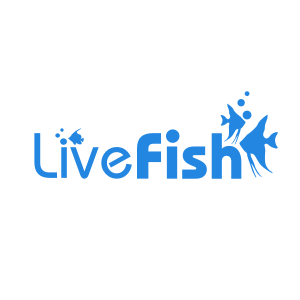Maroon Clownfish - Large
The Maroon Clownfish is a unique species with distinctive stunning colours. It is extremely hardy and great for beginners.
- Buy 4 for $52.79 each and save 10%
Maroon Clownfish have a variety of beautiful colours. The body can be bright orange, red, maroon, or purple/brown. It has three vertical bands running down its body. If one of these fish is mis-barred it means that the stripes only appear on the top of its body. The colour of the striped bands varies depending on the fishes' location. White banded maroon Clownfish are distributed across the Indo-Pacific. The Golden banded variety originates from Sumatra. There is also a newer variety which was discovered near New Guinea, off Fishermans Island. Instead of bands, they have a pattern on their bodies like lightning or netting. Females are some of the biggest clownfish, growing up to 8 inches (20 centimetres) in length. Males are smaller and grow to around 6 inches (13 centimetres).
Maroon Clownfish can be bred in captivity. Their courtship period starts 3-5 days before the female spawns, and her belly will swell up with eggs. As the time to spawn approaches, the male and female will clean a section of rock near their anemone. This is to help the eggs adhere properly. Courting rituals include touching dorsal fins while shaking their heads and head standing. When the female is ready to spawn she nips the anemone. This makes it retract and expose the area of rock where the female will lay her eggs. Once the eggs are laid the male immediately fertilizes them.
The Maroon Clownfish can be found in the Indo-Pacific region. Locations include India, Indonesia, Thailand, Philippines, North Australia, and Vanuatu. They inhabit lagoons and seaward reefs, between depths of 1-16 metres.
Tank Recommendations for the Maroon Clownfish
A single Maroon Clownfish requires a tank capacity of 30 gallons (113.5 litres). Increase this to at least 55 gallons (208 litres) if you are keeping it with other fish, with an anemone, or in a pair.
This species is suitable for a reef or fish only aquarium. They need plenty of live rock in a tank for grazing and hiding. It is preferable for them to have a host anemone or a substitute host such a rock structure or invertebrate.
They will need slow water movement in some tank areas so they can feed.
Suitable Tank Buddies
The Maroon Clownfish is classed as semi-aggressive, but it has a reputation for being one of the most aggressive Clownfish species. Even mated pairs may fight, and housing two juveniles could lead to death rather than pairing up.
This species is best-suited co-habiting with semi-aggressive and aggressive species. Their large size means they can live with fish that will normally swallow Clownfish whole.
Usually Compatible
Large semi-aggressive fish such as large Angelfish, Wrasses, and Tangs are fine. It is best to introduce the Clownfish into the tank first.
Sometime Compatible
Dwarf Angelfish and Conspecifics will need monitoring. Damselfish should be ok if the tank is bigger than 100 gallons with a variety of hiding place for both species. Large predators such as Eels and Groupers are ok as long as the Clownfish is too big to fit in their mouths.
Rarely Compatible
Avoid peaceful fish such as Fairy Wrasses, Dartfish, and Gobies. Semi-aggressive fish such as small Anthias, and other species of Clownfish. Seahorses and Pipefish are also incompatible.
Feeding your Maroon Clownfish
The Maroon Clownfish is omnivorous. In the wild, they eat mainly zooplankton and Algae. In an aquarium environment, they consume a combination of live, flake, and frozen food. They will also eat algae that occurs naturally in the tank. Suitable foods include chopped fish, and mussels, Brine shrimp, and Mysis shrimp. Spirulina should be included if there isn't enough algae in the tank. Feed juveniles 3-4 times per day, and adults 2-3 times per day.
| Scientific Name | Premnas biaculeatus |
|---|---|
| Care Level | Easy |
| Common Names | Maroon Clownfish, Spine Cheeked Anemonefish, Maroon Anemonefish, Gold Stripe Maroon Clownfish, Lightning Maroon Clownfish. |
| Diet | Omnivore |
| Fish Family | Pomacentridae |
| Lifespan (years) | 5 |
| Max. Length (cm) | 20 |
| Min. Tank Volume (l) | 114 |
| Origin | Indo-Pacific region. Locations include India, Indonesia, Thailand, Philippines, North Australia and Vanuatu, New Guinea, Sumatra |
| Reef Safe | Yes |
| Sociability | Semi-aggressive |
| Venomous | No |
| Water Conditions | 22.2-25.5°C (72-78° F), dKH 8-12, pH 8.1-8.4, sg 1.020-1.025 |


